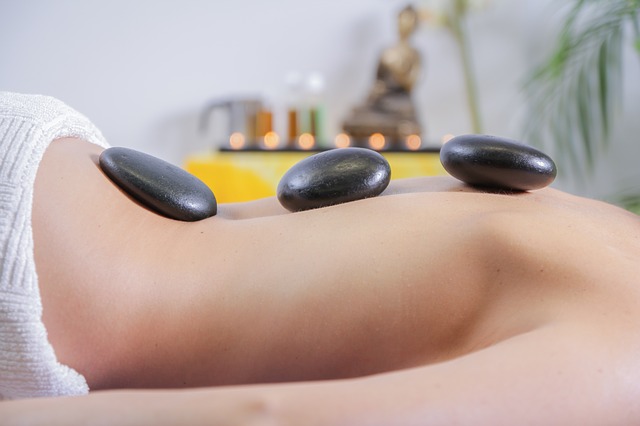Sports Hernia: An Overview
Severe and sudden pain that radiates from the groin or lower abdomen. Pain that disappears when you rest, but comes back when you engage in sports activity once again. Severe pain that intensifies when you make sudden movements, such as kicking, twisting, and pivoting. If you are engaged in strenuous sports and you’re suffering from the symptoms mentioned above, perhaps you’re suffering from an injury called sports hernia.
But what is sports hernia? For health professionals, sports hernia is officially called athletic pubalgia. It is also called hockey groin, Gilmore’s groin or sportsman’s hernia. It is an injury that affects the soft tissues located in the groin or lower abdomen areas.
Athletic pubalgia commonly affects people who play sports, such as football, rugby, or tennis–basically, any sports that require sudden twisting movements. Athletes who play high-intensity sports, such as American football, hockey, wrestling, lacrosse, and speed skating are also at risk for athletic pubalgia. This injury, however, is not just limited to professional athletes. Recreational athletes and college players can also suffer from sports hernia.
Its name contains the word “hernia,” but is this a “true” hernia? The answer is no. In a “true” hernia, a fatty tissue or an organ (often an intestine) pushes its way through a weak part anywhere in the abdominal wall. The result is an abdominal protrusion which can appear in the inner groin, outer groin, upper stomach, or belly button.
Unlike sports hernia, a “true” hernia does not stem from engaging in high-intensity sports, and the weakness of the muscle already exists at birth. People who are obesity or those who suffer from poor nutrition can also be affected by hernia. Other causes of hernia include chronic constipation or diarrhea, lifting heavy objects, and chronic coughing.
Other Symptoms of Sports Hernia
* Severe pain in one side of the lower abdomen or groin area
* Pain that can spread to the upper thigh and scrotum
* Intense pain is felt when the patient coughs or do stomach crunches
How Sports Hernia is Diagnosed and Treated
Sports hernia can be difficult to diagnose as its symptoms are similar to other conditions such as “true” hernia, adductor longus dysfunction, and osteitis pubis. To rule out other conditions, doctors will evaluate the patient’s history, conduct a physical exam, and request diagnostic imaging if necessary.
During the evaluation, the doctor will check if the patient engages in high-intensity sports that require sudden movements. The doctor will then have the patient sit or lie down, and palpate the lower abdomen, groin, and upper thighs to check for any pain or tenderness. The doctor may also ask the patient to attempt standard and oblique sit-ups to determine where the pain originates. Many doctors will request an MRI scan to completely rule out other possible conditions.
Once the patients is confirmed to have sports hernia, then the treatment will officially begin. The doctor will ask the patient to refrain from engaging in strenuous sports for four to six weeks. The break from strenuous activities will be supplemented by anti-inflammatory drugs to address the pain. To strengthen the abdominal muscles and prevent further injury, the doctor may also prescribe physical therapy. Nerve block, platelet-rich plasma, and steroid injection will also be administered in cases where severe and prolonged pain is present.
Traditional Chinese Medicine: When Conventional Treatment is Not Enough
Traditional Chinese medicine can be used as a complementary treatment for people who suffer from sports hernia.
Chinese Herbal Medicine
Herbs that strengthen muscles and help relieve pain have been used in traditional Chinese medicine for thousands of years. Some of these herbs are decocted or cooked first before they are consumed. Some of the herbs used to help relieve the pain caused by sports hernia are angelica roots, gardenia, turmeric, myrrh, safflower, cinnamon twig, angelica root, and Sparganium.
Acupuncture
Acupuncture involves inserting very fine and sterile needles in specific points or meridians of the body. This method has been proven to provide relief from pain by releasing endorphins, the human body’s natural painkillers. The acupuncturist may insert the needle directly into the affected area. If the pain is severe in the affected area, however, the TCM practitioner may insert the needles in certain acupuncture points in another part of the body.
Cupping Therapy
Cupping therapy is one of the elements of traditional Chinese medicine (TCM) that can be administered to provide relief from pain caused by sports hernia. Cupping is done by placing those tiny clear cups on the affected area and suctioning the air inside it. The suction helps heal the affected area by facilitating the circulation of blood and of “qi” (or “life force”), as well as aids in cell repair. Cupping is performed by placing cups on the affected area and suctioning the air out (dry cupping). Another type of cupping involves suction and medicinal bleeding (wet cupping).


My symptoms started at the age of 47. My fingers on my left hand were stiff and were difficult to move. People noticed that my walk was not normal. I was often asked did I hurt. I noticed nothing different about my walk. It was difficult getting up from` a chair and getting out of a car. I was diagnosed a year later ,it was the onset of tremors starting in my right hand that caused my other symptoms to be recognized as Parkinson’s.. I am now 59. With the new herbal medicine i purchase from totalcureherbsfoundation .c om was my only way to get rid of my PD,the herbal formula effectively reverse my condition and alleviate all symptoms.